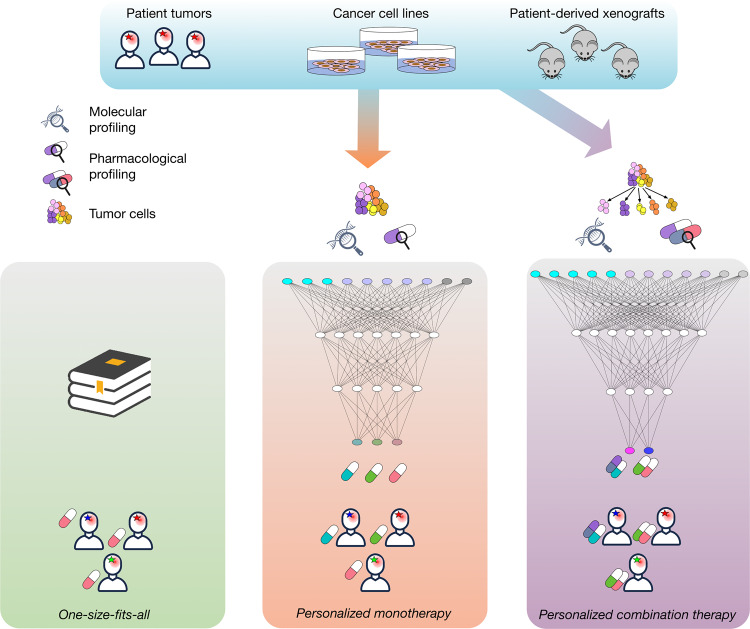Fig. 1. Graphical abstract.
Patient data are limited, so to predict drug response, much of the existing literature use model system data, e.g. immortalized cell lines and PDX. a Currently most patients in cancer are still treated in a one-size-fits-all manner according to the type (or subtype) of cancer they have. b There is a growing number of examples of personalizing monotherapy in practice, where depending on the mutations in the tumor, the patient can be prescribed a targeted drug. This approach is applicable to fewer than 20% of the patients. The computational contribution is to take a large number of model systems and patients, when available and construct a predictive model to identify the best drug for majority of the patients. c Due to tumor heterogeneity and acquired drug resistance, monotherapies may not be effective, there is currently a growing body of work predicting drug synergy and effective drug combinations. Originally these models were trained using bulk data, but more recently, single-cell data-based approaches are starting to show promise. The person symbol in the figure was obtained from dryicons.com. The black magnifying glass is courtesy of Stanislav Tischenko under the Creative Commons Attribution 3.0 License.

